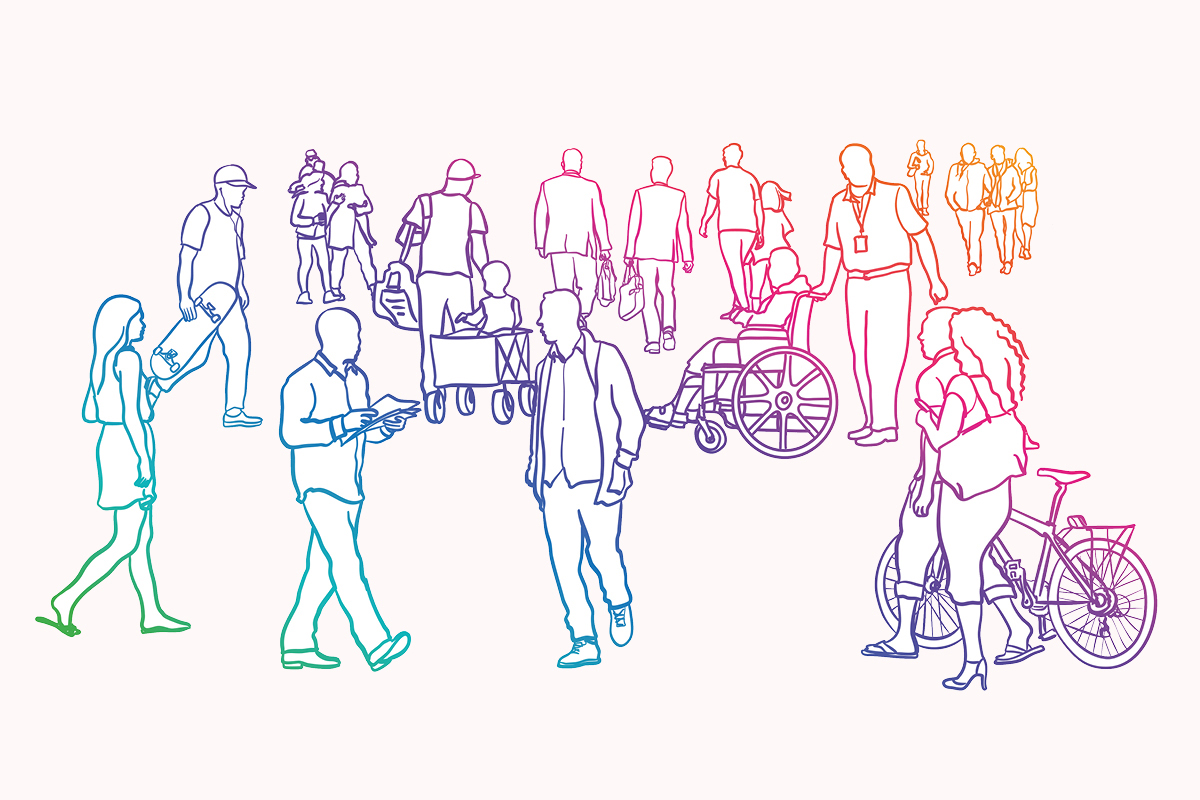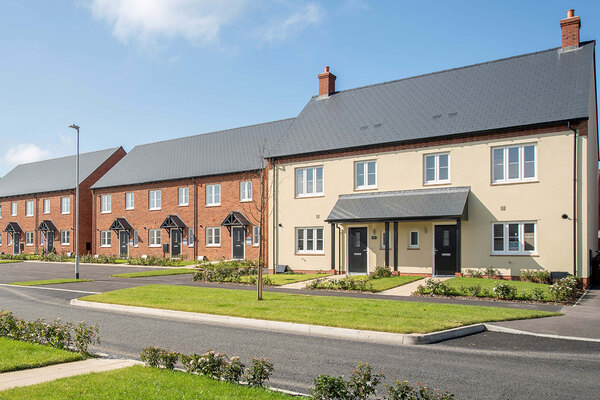CPD module: building reciprocal relationships with residents
Reciprocity is essential for social landlords to build successful relationships with residents. Anna de Souza, head of resident engagement at Peabody, and Ingrid Smith, communication lead and member of Peabody’s resident-led panel, explain how to go about it.
Read the article, take the quiz at the bottom of this article, earn CPD minutes


Learning outcomes
After reading this article, learners will be able to:
- Define reciprocity in the specific context of social housing co-production work
- Describe why reciprocal relationships are so critical to successful co-production activity
- Name and describe the characteristics of reciprocal relationships between tenants and social landlords in the context of co-production
- Name and describe the characteristics of successful co-production in social housing
- Detail some of the common challenges when seeking to build reciprocity in a tenant/social landlord relationship
- Discuss potential methods for building reciprocity into social housing co-production work
Establishing reciprocal relationships, in which both parties benefit, is central to successful co-production. In turn, co-production has been identified as increasingly important to creating services which meet the needs of the people who use them. By inviting tenants to share their experiences and views – and making decisions informed by them – it is possible to create better services.
However, reciprocity is not always straightforward. A social landlord/resident relationship does not start from a position of equal power. This imbalance can be carried into co-production work, leading to an absence of reciprocity. Where this happens, co-production does not function as it should and so its outcomes are poorer.
This CPD module considers reciprocal relationships in the context of social housing co-production work and how relationships can be built. It draws on experiences at Peabody – a housing association with 107,000 homes and 220,000 residents in London and the Home Counties.
What is reciprocity and why is it important to successful co-production?
Reciprocity describes a mutually beneficial exchange between people or groups. In a reciprocal relationship, each party receives a benefit from giving to the other. This balanced exchange – where both parties get something out of the relationship – is central to co-production. There is no one definition of co-production. Fundamentally it describes the notion that organisations should do things with people rather than doing things to them, so it is possible to create services which better meet the needs of the people who use them.
Social landlords and tenants do not start from positions of equal power. A tenant is reliant on their landlord for their home and for its safety and suitability. Influence over a significant portion of their well-being and good health therefore rests with their landlord. This power differential can carry into attempts at co-production. Residents may be reluctant to share honest opinions for fear that it will affect how they are treated. They could feel a pressure to offer feedback or attend activities, even if they feel they gain limited value.
For those working in social housing, this power imbalance means co-production becomes – consciously or subconsciously – something that is done as a courtesy or tick-box exercise. In these situations, engagement with residents is not intended to provide insight which could guide a better decision. Often the decision has already been taken, and the only input that is wanted from residents is agreement, meaning the value of residents’ time and expertise is often not recognised. There can be a sense that an opportunity to share an opinion is reward enough. This negates the benefits of engaging in co-production.
What are the building blocks of a reciprocal relationship in social housing co-production?
There are several actions, approaches and attitudes which help create a co-production relationship that is beneficial to both parties. For social landlords, some of the building blocks to such a relationship include:
- Fostering trust: If residents are to openly share opinions – particularly ones which challenge a service or plan – then they need to trust they will not experience negative consequences from doing so.
- Removing the sense of ‘them and us’: Any resident involved in co-production should feel like an equal.
- Showing that the opinions, contributions and time offered by residents are appreciated and valued: There should be a clear recognition of, and gratitude for, any contribution from a resident to a co-production process.
- Showing that all residents can make a contribution which will be valued: There should be no sense that participation is only invited by certain groups or certain backgrounds. Every resident should feel they are equally supported to contribute. Diversity of experience and opinion is important to successful co-production.
Grounded in reciprocity: characteristics of effective co-production
‘True’ co-production involves:
- Sharing power – landlords and residents work together to achieve an outcome, recognising that everyone involved in the process has something valuable to contribute.
- Reciprocal relationships – everyone involved in the co-production project benefits. This benefit should be commensurate with the time and expertise shared.
- Lived experience – the project involves people with lived and learned experience.
- Working together towards a common purpose – all those working on the project are united in a shared purpose, recognise this purpose and are invested in it.
What are methods for building reciprocity into social housing co-production work?
Each of the following methods can contribute to the creation of reciprocal co-production relationships.
- Offer remuneration and/or learning: There has traditionally been an assumption that residents involved in co-production should give up their time for free – that a chance to speak up is reward enough. At most, free refreshments might be offered. An employee engaged in a co-production activity, on the other hand, is remunerated for the work as part of their job. This creates a power imbalance and a sense that one party’s time is valued over the other. At Peabody, efforts are made to acknowledge the skills and expertise of residents. Those who are involved in strategic panels are offered a quarterly allowance for their time. Members of resident groups are offered training with Tpas, so those involved can gain skills and bolster their CVs. Officially recognised tenants’ and residents’ associations are given a £300 annual grant. For completing one-off surveys or taking part in one-off focus groups, vouchers might be offered and travel fees will be covered. In all these ways and more, leaders at Peabody seek to remove any barriers to engagement and to make clear the deep appreciation for what residents bring to co-production.
- Offer the right resources and support: The loan of a laptop, for instance, can enable someone to get involved with online engagement activities in a way that would not be possible otherwise. If someone has caring responsibilities, it might be appropriate instead to find support for this. Thinking through individual needs – and discussing them with the resident – is important in building a strong relationship.
- Use the right language: Those working within the social housing sector often use terms which would not be used in the same way by residents. A good example is ‘building safety’. If a landlord engages on this issue, the aim is generally to gather feedback on feelings of safety in the event of a fire. To many residents, however, the term would instead be associated with unauthorised access to their block, mail theft or anti-social behaviour. Similarly, abbreviations that are commonly used among employees may be unknown to residents. When unfamiliar terms are used in co-production, it can alienate residents or make them feel excluded. To build reciprocal relationships, then, language must be a key focus. A friendly and inclusive approach should be used.
- Do not pull rank: Consider a small group discussion between residents and board members at a housing association. The board members are all wearing ID badges and corporate lanyards, with their job titles displayed. The residents have no such identification. In this situation, there is an immediately visible ‘them and us’, and a sense that the employees are more important than the residents. An act as simple as removing lanyards in such meetings, or creating name cards for everyone at the table, can help foster an environment that is far better suited to the creation of reciprocity.
- Offer multiple ways to get involved: If the only opportunities for co-production are digital, this excludes anyone without access to an internet-enabled device. In contrast, if all engagement activities are in person during the day, this excludes anyone who has commitments during daytime hours. Landlords need to offer a range of co-production activities – always with a sense of the varying needs of residents. At Peabody, there is an online resident engagement platform (The Garden) via which feedback can be quickly shared; face-to-face community events; and panels which meet regularly. The idea is to offer a menu of options from which any resident who wants to get involved can find a way to do so. Diversity of opinion and experience is a key aspect of successful co-production.
- Drop defensiveness: Defensiveness is an understandable response if negative feedback is offered by residents, but it is also unhelpful. It often removes the potential for learning and it makes it less likely that resident will share concerns in the future. Adopting an open attitude to all feedback is a far better way of establishing a strong and balanced relationship.
- Show residents how their feedback has been acted on: Staff at Peabody have seen a correlation between demonstrations when they have listened to residents and those residents being satisfied. Any co-production activity must encompass an element of feeding back on what has been done as a result of resident engagement. Ideally this takes the form of a ‘you said, we did’ type of communication. Sometimes it may not be possible to have acted on the feedback – perhaps due to financial constraints – and it is important to be honest about this. This means residents will feel heard and that their opinions are valued.
Areas to reflect on
- To what extent do you think co-production in your own organisation is grounded in reciprocal relationships? What could you or your colleagues do to increase reciprocity?
- Has reading this article changed any aspect of your understanding of co-production? In what way? Will this impact how you approach such work from now on?
- What one point do you want to share with colleagues who may not have read it? How will you share it?
Summary
By engaging in a process of co-production, social landlords can shape services that are more closely tailored to residents’ needs. Success is dependent on the nature of the relationship between the landlord and resident. This relationship inevitably starts from a power imbalance, and the danger is that any attempt at engagement feels like a parent-child conversation.
Instead, co-production relationships need to be reciprocal: the resident must benefit as much as the landlord, and be seen as an equal partner with valuable insight. This allows the co-production process to flourish and residents become a part of solutions. Considering areas such as remuneration, training, flexible engagement options and appropriate language help to create this sort of setting.
References and further reading
- Walsh, K., Shrewsbury, J., and O’Donoghue, V. (2024), Inside Housing, What is co-production, how can it be fostered, and what are the potential benefits of getting it right?
- Woodall, J., Davison, E., Parnaby, J., Hall, A-M. (2019), The National Lottery Community Fund, Meeting of Minds: How co-production benefits people, professionals and organisations
Inside Housing CPD content archive
Find out more about Inside Housing’s CPD offering by clicking here
Consumer standards – what has been learned in the first year?
The consumer standards were brought in to hold social landlords to account on tenant safety and services. Kate Dodsworth, chief of regulatory engagement at the Regulator of Social Housing, discusses the findings so far
Evaluating the impact of Housing First in the UK
What is the Housing First homelessness model, and how is it applied in this country? Dr Lígia Teixeira, founding chief executive at the Centre for Homelessness Impact, explains more
Fostering data-driven engagement with residents on fuel poverty
Watch the full webinar at the end of this article in association with Switchee, Fostering data-driven engagement with residents on fuel poverty
How have fire safety regulations changed and how can providers remain compliant?
Recent legislation aims to improve fire safety in buildings by increasing accountability and improving fire risk assessments. Andy Frankum, chair of the National Social Housing Fire Strategy Group, explains more
Tenancy fraud – how to spot it and how to fight it
Stephanie Toghill of Islington Council and vice-chair of the Tenancy Fraud Forum explains what tenancy fraud is, how it occurs and how to tackle it
How landlords should deal with TSMs, one year on
Tenant satisfaction measures were brought in by the regulator last year and assess whether landlords are providing quality homes and services to tenants. Tim Quinlan at Riverside explains how it has adjusted to the changes
The importance of good quality data to good air quality
Watch the full webinar, The importance of good quality data to good air quality
Making data-led decisions in social housing
How data is stored and used is crucial for decision-making across the social housing sector. Dr Laura Wales, head of data at Raven Housing Trust, explains why
Building reciprocal relationships with residents
Reciprocity is essential for social landlords to build successful relationships with residents. Anna de Souza and Ingrid Smith at Peabody explain how to go about it
How can social landlords assess whether retrofit is delivering intended performance improvements?
Watch the full webinar, How can social landlords assess whether retrofit is delivering intended performance improvements?
How social landlords should assess and report performance on ESG
Social landlords are increasingly expected not only to consider their environmental and social impact, but also to demonstrate it. Andy Smith, head of impact services at The Good Economy, outlines what providers need to consider
Designing new builds with indoor air quality in mind
Could the drive for energy efficiency in new builds be at the expense of indoor air quality? Dr Jenny Brierley, former housing association chief executive and indoor air quality researcher, explains
AI and robotic process automation – how to use them in social housing
Artificial intelligence and robotic process automation could transform the way social landlords operate and create efficiencies. Monica Quintero, head of digital at Stockport Homes Group, explains the benefits and pitfalls
How to approach decarbonisation policy and strategies
The policy environment on decarbonisation and retrofit is evolving, so how can social landlords continue to build strategies to meet net zero? Richard Ellis, director of sustainability at Peabody, explains
Addressing the development gap in social housing
There is a significant gap between the social housing available in the UK and the number of people who need it. Vicky Savage, executive group director for development and sales at L&Q, looks at the ways in which social landlords can support and increase further development
The importance of indoor air quality
What is indoor air quality, why is it important, and how can it be improved in social housing? Professor Tim Sharpe, head of the department of architecture at the University of Strathclyde, explains
The Procurement Act 2023 – how will it affect landlords?
The Procurement Act 2023 passed into law at the end of last year, with full implementation set for October 2024. How does it change procurement processes, what stays the same and how should social landlords adapt? John Wallace, director of procurement at Clarion, explains all
Funding options in social housing
What does the current finance environment look like in the social housing sector, and what are the different options? Arun Poobalasingam, funding and marketing director at affordable housing aggregator The Housing Finance Corporation, explains more
The new building safety regime
Why has the new building safety regime been introduced, what is different, and what do social landlords need to do to ensure compliance? Andrew Moore, head of operations for building control and planning service at the Building Safety Regulator, explains
The recruitment and retention challenge in repairs and maintenance
The social housing sector faces a challenge in recruiting and retaining repairs and maintenance staff. Mark Coogan, Liz O’Connor, Paul Longman, Russell Thompson and Mike Wilson explore the causes and some potential solutions
Co-production
What is co-production, how can it be fostered, and what are the potential benefits of getting it right? Learn how the concept can be applied successfully to social housing
Psychologically informed environments
How psychologically informed environments take into account how previous trauma might impact people who have experienced homelessness and how they interact with support services
Understanding damp and mould
Housing ombudsman Richard Blakeway discusses how social landlords can tackle the problem of damp and mould in their homes
Tenant satisfaction measures
Watch the full webinar How to collect, report and act on tenant satisfaction measures









